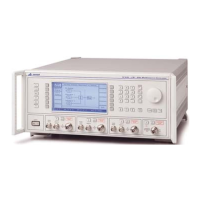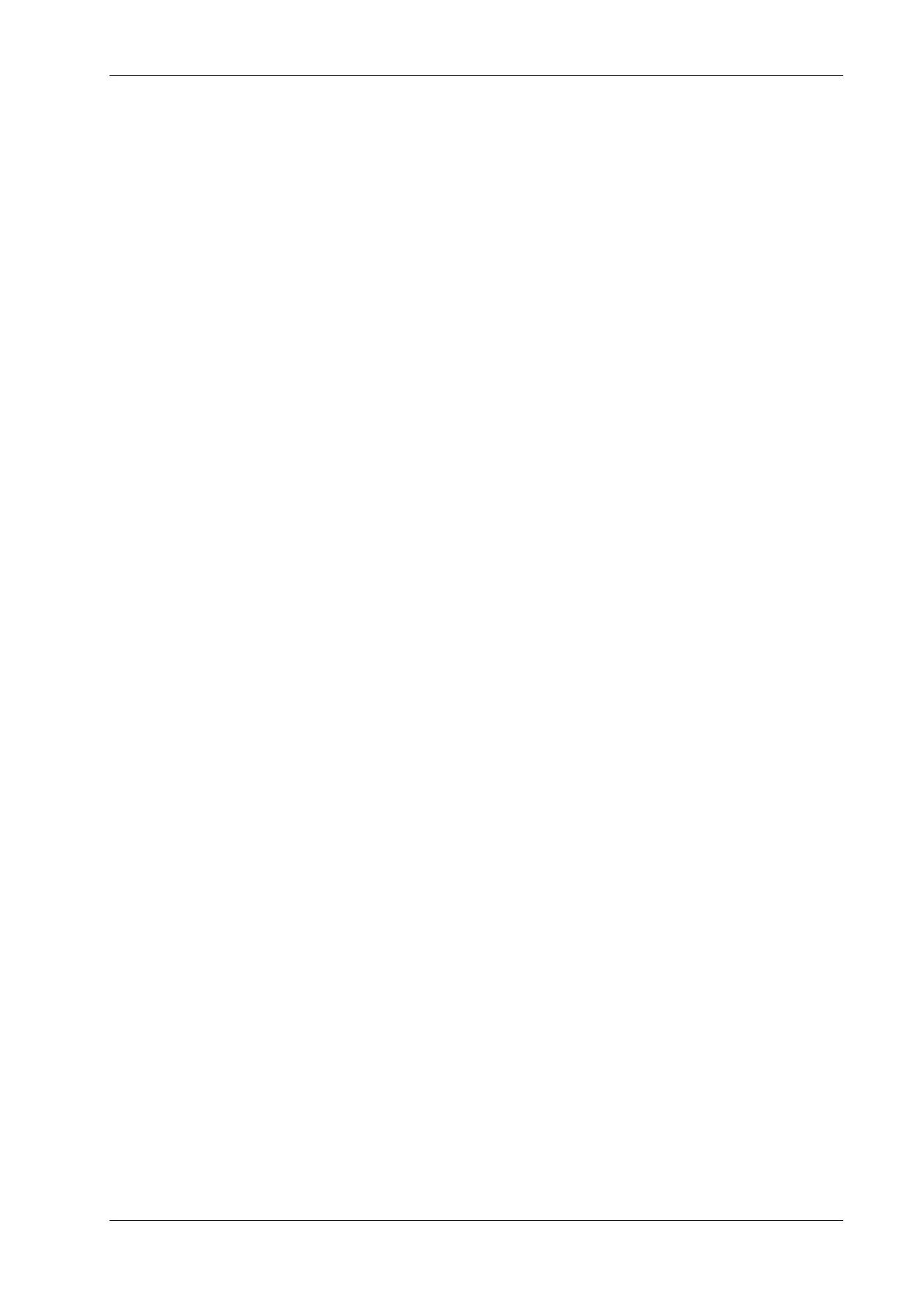TEST PROCEDURES
46882/439 7-15
Test procedure
(1) Connect the test equipment as shown in Fig. 7-8, with the spectrum analyzer connected to
the combined RF output via a T-piece. The 50 Ω load presents a 2:1 source VSWR.
(2) On the UUT set source A to:
[Carrier Freq] 5.001 [MHz]
[RF Level] 0 [dB]
Set source B to:
[Carrier Freq] 5.008 [MHz] (7 kHz spacing)
[RF Level] 0 [dB]
[SET UP]
[Combiner Set-up]
[A O/P /
Σ
]
[B O/P /
Σ
]
[EXIT]
[SIG GEN]
(3) Measure the level of the third-order intermodulation products on the spectrum analyzer at
the frequencies shown in Table 7-26.
(4)
Repeat (2) to (3) for each of the carrier frequencies shown in Table 7-26.
(5)
Set the RF levels on sources A and B to −14 dBm and repeat (2) to (4).
(6) If Option 1 is fitted, repeat (2) to (5) with sources A and C using Table 7-27.
(7
) If Option 1 is fitted, repeat (2) to (5) with sources B and C using Table 7-28.
Isolation
Test procedure
This procedure tests the isolation between any individual output set to 0 dBm and the combined
output. The other areas of the isolation specification are tested implicitly by this procedure.
(1) Connect the test equipment as shown in Fig. 7-4 with the spectrum analyzer connected to
the combined RF output.
(2) On the UUT set source A to:
[Carrier Freq] 800 [MHz]
[RF Level] 0 [dB]
Terminate source A with the 50 Ω termination.
Ensure source B (and source C, if Option 1 is fitted) is turned off or set to −137 dBm.
(3) Set the spectrum analyzer to 800 MHz.
(4) Measure the isolation on the spectrum analyzer at the carrier frequencies shown in
Table 7-29, checking that the resu
lts are within specification.
(5) Repeat (2) to (4) for source B, terminating source B with 50 Ω, disabling source A (and
source C, if Option 1 is fitted) using Table 7-29.
(6
) If Option 1 is fitted, repeat (2) to (4) using Table 7-29 for source C, terminating source C
with
50 Ω and disabling sources A and B.

